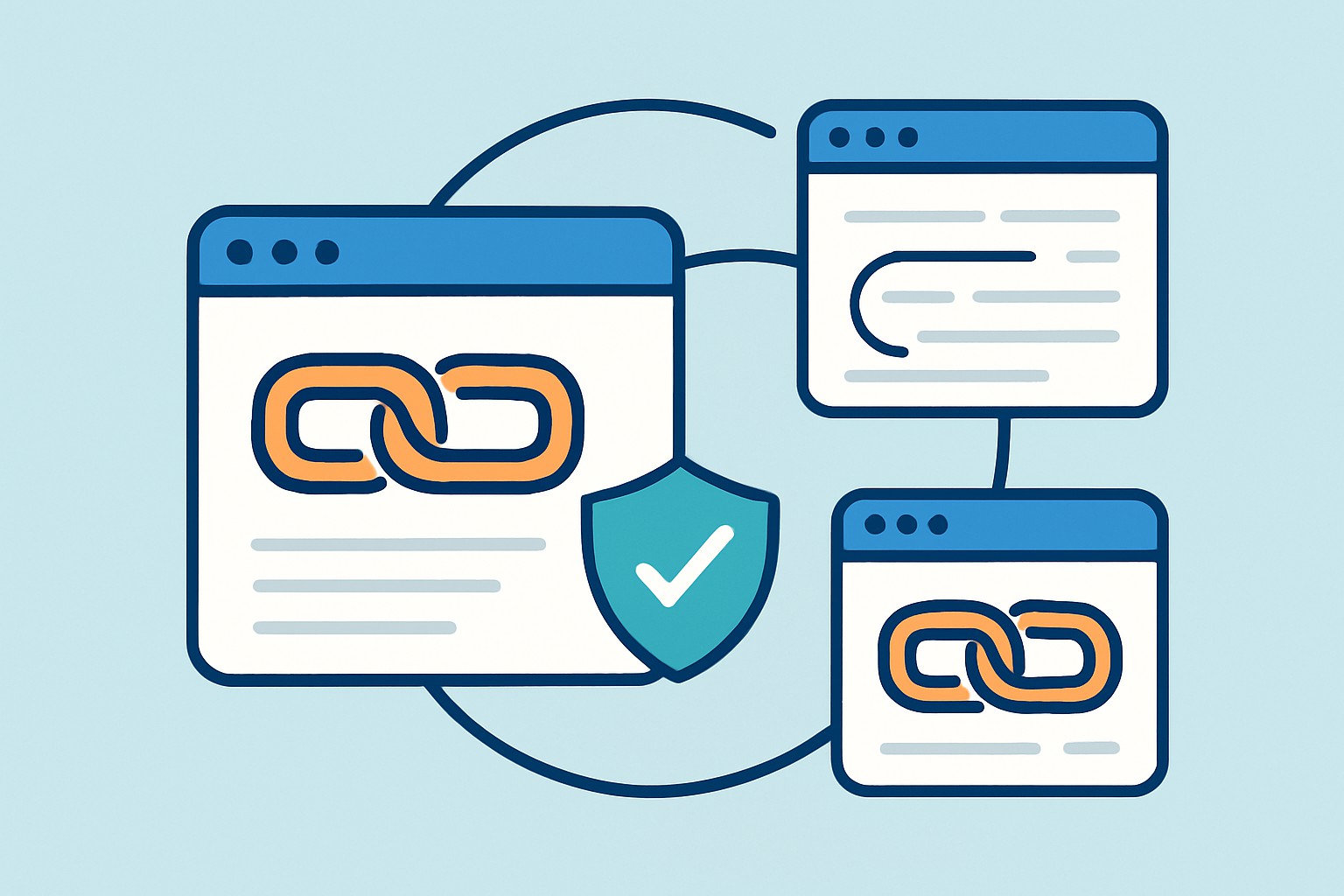
Best Backlink Site Choices for Small Business
Explore top backlink sites tailored for small businesses that balance cost, ease, and SEO impact. Le...

Link exchange SEO used to be the go-to trick for boosting search engine rankings by swapping backlinks between sites. Back in the early 2000s, it was a straightforward give-and-take strategy to pump up domain authority before search engines got wise to sneaky tactics like this. Nowadays link exchange still sparks debate among marketers. Some swear by it as a handy networking and SEO tool when you tread carefully, while others warn about the risks and potential penalties lurking around the corner.
Link exchange SEO is about swapping backlinks with other websites to boost your search rankings. Unlike one-way backlinks where one site links to another, link exchanges are like a friendly handshake. Both sides benefit.
When it comes to giving your SEO a little nudge in the right direction, link exchange can be quite the trusty sidekick. It’s not just about swapping URLs—it’s more like building a network of little trust signals across the web. In my experience, this friendly barter can help boost your site’s visibility and credibility if done thoughtfully. Sure, it’s not a magic bullet, but think of it as planting seeds for your search ranking garden—patience and care pay off. Plus, forging these connections can lead to unexpected perks, like referral traffic and new collaborations. Just be sure to play it smart—quality over quantity is the name of the game here.
Link exchange SEO can really pack a punch when approached with care and strategy. It often helps forge solid relationships with key players in your industry. It also gives your domain authority a boost thanks to quality backlinks and pulls in some welcome referral traffic along the way.
"When link exchanges take place with relevant and trustworthy partners and slot in naturally within valuable content, they often create meaningful connections and can genuinely boost your SEO efforts. At least, that’s been my experience." – Jessica Tran, SEO Strategist
While link exchange SEO can definitely bring some perks to the table, it’s not without its fair share of risks and pitfalls. Google’s algorithms have a knack for spotting and penalizing sites that get a little too enthusiastic with manipulative or nonstop reciprocal linking. Finding relevant and trustworthy partners usually takes some real elbow grease.
"Relying on outdated or sloppy link exchange tactics tends to land you in hot water pretty fast, with penalties and falling rankings not far behind. In my experience, marketers truly need to zero in on quality and relevance rather than just chasing a high link count if they want to keep their SEO ship sailing smoothly." – Marcus Lee, SEO Consultant
Today’s link exchange strategies focus on quality and relevance while complying with search engine rules. Rather than swapping links willy-nilly, savvy marketers craft targeted partnerships with niche-relevant and authoritative sites. They zero in on content-driven exchanges like guest blogging.
Exchange links only with websites that truly align with your niche or industry so you get the best value and actually reach the right audience.
Focus on linking with authoritative and trustworthy sites that have solid domain authority and clean backlink profiles because these are worth your time.
Choose content-driven link exchanges like guest posts or sharing valuable resources instead of swapping sidebar or footer links that often go unnoticed.
Monitor your reciprocal links carefully and keep them to a reasonable number. Make sure they fit naturally within the content so they do not stand out awkwardly.
Be upfront and clear about the terms with your partners. Transparency helps keep things ethical and prevents you from falling into hidden link schemes.
Zeroing in on niche relevance usually means swapping links with a website that’s somewhat in the same ballpark rather than one that’s completely out in left field. This little tweak helps your backlink carry some serious weight and meaningful context for search engines. Guest posts are a neat way to share useful content with the partner site’s audience while naturally slipping in your link—think of it as a win-win that boosts both your street cred and the user experience. It’s wise to steer clear of too many reciprocal links since that can make your site look a bit shady or manipulative. Instead, you’ll want to aim for those coveted one-way links.
When sizing up how well your link exchange SEO campaigns are doing, it pays to keep a close eye on key metrics like referral traffic from partner sites and shifts in domain authority or trust flow. Also watch the overall health of your backlink profile over time. Tools like Semrush's backlink analysis or Moz's Link Explorer usually offer detailed insights that help you track these KPIs without breaking a sweat.
| Metric | Successful Link Exchange Outcome | Risky Link Exchange Outcome |
|---|---|---|
| Referral Traffic | Steady, reliable growth from visitors who actually care and stick around | Barely any growth, usually from visitors who couldn’t be less interested |
| Link Quality Score | Strong domain authority boosted by trusted, relevant backlinks | Low-quality, often spammy or completely off-topic sources that raise eyebrows |
| Backlink Velocity | A smooth, natural uptick over time that feels just right | Sudden spikes that scream 'something fishy is going on' |
| Ranking Improvements | Slow and steady wins the race with keyword rankings creeping upward | Rankings that bounce all over the place or take a nosedive |
| Penalty Risk | Generally low, thanks to a healthy backlink profile doing its job | Much higher risk tied to unnatural links or shady link schemes lurking below |
Keeping a safe and effective link exchange profile is no walk in the park—it requires steady effort and a watchful eye. Running regular backlink audits can really save your skin by catching harmful links before they turn into full-blown headaches. It’s wise to mix things up and diversify your sources instead of relying heavily on reciprocal links because variety is the spice of life and SEO. Plus, focusing on high-quality content ensures your links aren’t just there to fill space but actually bring something valuable to the table. Avoid automated link exchange schemes as they often cause more trouble than they’re worth.

An SEO professional performing a backlink audit using data analytics tools to assess link exchange quality.
Link exchange SEO usually plays to the strengths of small to medium niche websites that look for relevant backlinks and suits businesses that don’t mind rolling up their sleeves to keep a close eye on quality control. Marketers with established content partnerships or those willing to invest genuine time and effort into building real connections tend to get a lot out of it.
Small to medium niche sites that are looking to snag backlinks genuinely tied to their industry—because let’s face it, relevant links really do make a difference in contextual SEO.
Businesses or bloggers who are already in the groove of ongoing content partnerships and can seamlessly weave in link exchanges without it feeling forced.
Seasoned marketers who have the knack to scrutinize and manage the quality of their link exchange partners with a careful, steady hand.
Websites sporting a clean backlink profile that are keen to responsibly branch out and diversify their link sources—no reckless moves here.
Marketers willing to roll up their sleeves and invest the time and effort needed to build authentic relationships, rather than chasing quick shortcuts that rarely pay off.
Link exchange SEO can still be a handy tool when you handle it with care by focusing on quality and relevancy with a healthy dose of transparency. It often helps to forge genuine connections and gives your SEO a nice nudge but watch out—if you’re not careful things can quickly go sideways.
19 articles published
With over two decades of experience navigating the intricate realms of online marketing, Bryson Gallagher is renowned for his strategic prowess and data-driven methodologies, equipping organizations with the tools to seamlessly engage global audiences.
Read Pages
Explore top backlink sites tailored for small businesses that balance cost, ease, and SEO impact. Le...

Unlock your website’s full SEO potential with premium linkbuilding techniques designed to build auth...

Learn actionable techniques to build quality backlinks from foreign domains. This guide empowers you...

Understanding what is reciprocal link in SEO versus natural links is key for effective link building...